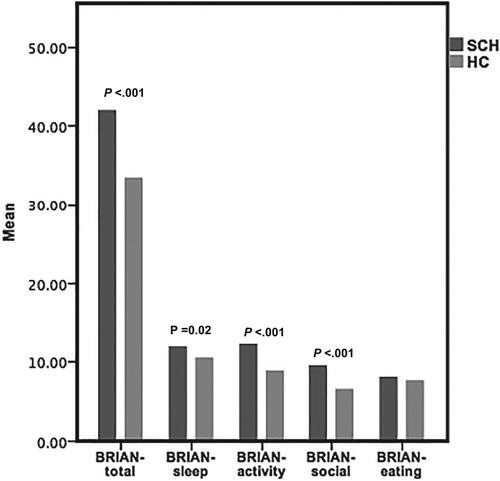Figures & data
Table 1. Sociodemographic, clinical characteristics and cognitive test scores of studied population.
Figure 1. Comparison of BRIAN total and subscale scores between patients and healthy controls. BRIAN total score and sleep, activity and social rhythm subscale scores were significantly higher in patient group than controls (p < .001; p = .02; p < .001 and p < .001, respectively). There was no significant diffirence between study groups in terms of eating subscale score (p = .39). Student's t-test was used to compare Brain total score and sleep subscale score; Mann-Whitney U test was used to compare activity, social rhythm and eating subscale scores. BRIAN: Biological Rhythm Interview of Assessment in Neuropsychiatry.

